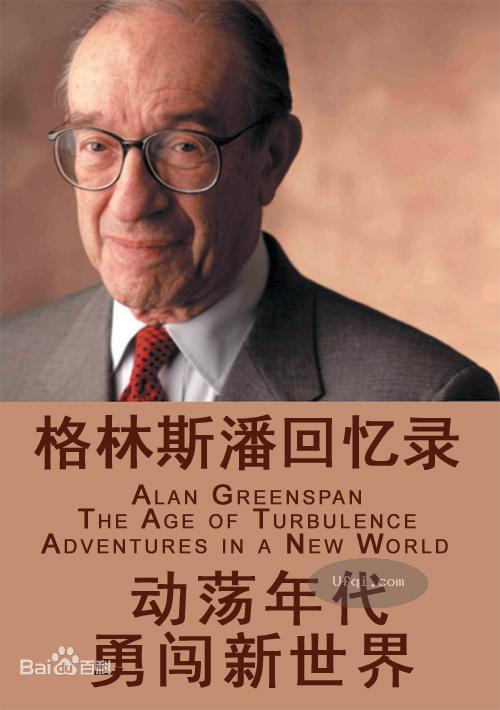


2023-08-09 , 9541 , 104 , 138
美联储主席格林斯潘回忆录——动荡年代:勇闯新世界-94:CURRENT ACCOUNTS AND DEBT-2
美国财政部周三(2023年2月15日)公布的数据显示,
截至2022年12月底,中国的美国国债持有额为8670亿美元。
中国是美国第二大债权人,持美债最多的国家是日本。
2022年,日本也在抛售美国主权债券,其数额甚至大于中国。
根据美国TIC系统周三公布的数据,日本(2022年)去年减持了2245亿美元;中国减持了1732亿美元,减幅17%。
----
CURRENT ACCOUNTS AND DEBT
Most foreigners and many U.S. analysts point to the burgeoning U.S. budget deficit as the primary cause of our current account imbalance.
But over the past decade the fiscal balance has at times veered in directions opposite from the direction of the current account deficit.
As our budget was building surpluses between 1998 and 2001, for example, our current account deficit continued to rise.
Some argue that the heavy purchases of U.S. Treasury obligations by other countries' monetary authorities, first Japan and then China, to suppress their exchange rates have elevated the dollar's foreign-exchange value and thereby played a role in the huge increase in U.S. imports (from 13 percent of U.S. GDP in early 2002 to almost 18 percent in late 2006).
There is doubtless some truth in that, but the impact of official efforts to manipulate exchange rates, in my experience, is often exaggerated.*
Vastly more significant is the U.S. dollar's status as the world's foremost reserve
currency, which has so far fostered the financing of our external deficit.
*I have little doubt that China's monetary authorities' purchase of hundreds of billions of dollars to suppress its exchange rate has been successful.
The Chinese financial system is still sufficiently primitive that market-generated offsets to those purchases are few.
But apparently this is not the case with Japan.
There is little evidence that Japan's purchase of hundreds of billions of dollars to suppress the yen has had much effect.



Japan is part of a very sophisticated international financial system that can absorb huge quantities of securities with only marginal effects on interest rates and exchange rates.
For example, billions of dollars of U.S. Treasury securities can be swapped for equivalent sums in high-grade bonds for a modest cost in terms of basis points.
In other words, large accumulations or liquidations of U.S. treasuries can be made with only modest effects on interest rates.
The same holds true for exchange rates.
The Japanese monetary authorities purchased $20 billion in a single day a number of years ago, without evidence of a significant impact on the yen's exchange rate. Months later, not being adequately aware of the political sensitivity of such operations, I mentioned the ineffectual purchase publicly.
My Japanese friends were not amused.
Again, in March 2004, the Japanese abruptly ended a long period of very aggressive intervention against the yen. The exchange rate barely responded.
349
THE AGE OF TURBULENCE
Many observers, however, consider this a vulnerability as well—foreign monetary authorities might close out their dollar positions suddenly and en masse by converting reserves to; say, euros or yen. I will address this concern in chapter 25.
The most compelling explanation for the historic rise in the U.S. current account deficit is that it stems from a broad set offerees.
This does not have the attraction of a single, "smoking-gun" explanation such as our federal budget deficit, but it is more consonant with the reality of international finance.
The rise appears to have coincided with a pronounced new phase of globalization.
The key contributors, as I see it, have been a major decline in what economists call "home bias" and a significant acceleration in U.S. productivity growth.



UfqiLong
Home bias is the parochial tendency of investors to invest their savings in their home country, even though this means passing up more profitable foreign opportunities.
When people are familiar with an investment environment,
they perceive less risk than they do for objectively comparable investments in distant, less familiar environs.
A decline in home bias is reflected in savers increasingly reaching across national borders to invest in foreign assets.
Such a shift causes a rise in current account surpluses of some countries and an offsetting rise in deficits of others.
For the world as a whole, of course, exports must equal imports, and the world consolidated current account balance is always zero.
Home bias was very much in evidence globally for the half century following
World War II.
Domestic saving was directed almost wholly toward domestic investment, that is, plant, equipment, inventories, and housing within investors' sovereign borders.
In a world with exceptionally strong home bias, external imbalances were small.
However, starting in the 1990s, home bias began to decline perceptibly,
the consequence of a dismantling of restrictions on cross-border capital flows that more or less coincided with the boost to competitive capitalism from the demise of central planning.
Private ownership and cross-border investment rose significantly.
Moreover, the advance of information and communication technologies has effectively shrunk the time and distance that separate markets around the world.
In short, vast improvements in technology and governance have expanded investors' geographic horizons, rendering foreign investment less risky than it appeared in earlier decades.
350
(未完待续, To be contd)



🔗 连载目录
🤖 智能推荐









